This article was co-authored by Mohiba Tareen, MD and by wikiHow staff writer, Christopher M. Osborne, PhD. Mohiba Tareen is a board certified Dermatologist and the founder of Tareen Dermatology located in Roseville, Maplewood and Faribault, Minnesota. Dr. Tareen completed medical school at the University of Michigan in Ann Arbor, where she was inducted into the prestigious Alpha Omega Alpha honor society. While a dermatology resident at Columbia University in New York City, she won the Conrad Stritzler award of the New York Dermatologic Society and was published in The New England Journal of Medicine. Dr. Tareen then completed a procedural fellowship which focused on dermatologic surgery, laser, and cosmetic dermatology.
There are 11 references cited in this article, which can be found at the bottom of the page.
wikiHow marks an article as reader-approved once it receives enough positive feedback. In this case, 87% of readers who voted found the article helpful, earning it our reader-approved status.
This article has been viewed 30,220 times.
Third degree burns require immediate medical attention. They penetrate the entire thickness of your skin, from the epidermis to the dermis and hypodermis subcutaneous layers. The wound may look white and waxy, brown and charred, or raised and leathery; yet there might not be any pain at the site due to nerve damage.[1] Get immediate medical help if you suspect a third degree burn is possible. In the meantime, provide first aid care and watch for signs of shock. The treatment and healing processes for third degree burns take time and will vary based on the nature of the injury.
Steps
First Aid and Emergency Treatment
-
1Call emergency services right away. Don’t waste time trying to figure out if it’s a third degree burn. Especially if it looks waxy white or charred brown, produces little or no pain, or covers a large area, assume the worst. Call 911 in the U.S., or the emergency number where you live.[2]
- If you’re the burn victim and are alone, you may go into shock soon after. Call for help right away and — if possible — lie down with your feet and the wound elevated.
-
2Move the burn victim to safety when possible. If you see someone being actively burned, or in close proximity to the burn source, pull them away from it if it is safe for you to do so. Smother flames on their clothing or body with a damp (if possible) or dry blanket, or a heavy coat.[3] If they are unconscious or you suspect a head or neck injury is possible, move them only if you must and only as far as you must.[4]
- Be particularly careful around burns caused by electricity, such as downed power lines. Also be aware of leaking fuel or explosive gas in the area, such as after a car accident.
Advertisement -
3Lightly cover the wound and do nothing else to it. Do not pour water or place ice on a severe burn. If there is clothing burned into the wound, leave it alone. You’ll only do further skin tissue damage. Loosely place a clean, lint-free cloth, such as a cotton sheet, over the wound.[5]
- Try not to let the covering stick to the wound, and don’t remove it after applying it.
-
4Manage signs of shock until help arrives. Shock, which can be caused by inadequate blood circulation, is a life-threatening concern for severe burn victims. If the person loses consciousness, appears weak or confused, has a rapid but weak pulse, or otherwise seems to be struggling in ways unrelated to the burn itself, assume they’re going into shock.[6]
- Lay the burn victim on their back, if it is safe to move them.
- Elevate their feet about 12 inches (30 cm), if possible. Also, if you can, elevate the burn area above their heart.
- Cover them loosely with a blanket or other covering if they are shaking. Try not to let the covering stick to the burn.
- If the person is not breathing or doesn’t have a pulse, begin CPR if you are able.
Hospital Treatment for Severe Burns
-
1Get critical care for any life-threatening conditions. If the burn has damaged vital organs, caused major blood loss, or led to shock, your life could be at risk. While addressing the actual burn injury as soon as possible greatly improves the recovery outlook, the medical team may need to stabilize your vital signs first. Let the emergency room and critical care team to their job. Once they’ve stabilized you, they’ll attend to the burn wounds. [7]
- Stabilizing a victim of third degree burns might include using IV’s, providing oxygen, intubating or ventilating an unconscious victim, performing CPR or using and AED defibrillator..
-
2Undergo cleaning and debriding of the wound. Debris like scorched clothing, along with dead tissue, must be removed from the wound as soon as possible in order to reduce the risk of serious infections or other complications. Based on the nature of your burn, you might be placed in a special tub for cleaning and debriding, or surgical procedures may be required.[8]
-
3Receive intravenous (IV) fluids. Third degree burns cause fluid to leak from the blood vessels, stopping organs from getting the nutrients they need. IV fluids counteract this, giving the body nutrients and energy that it needs to heal.[9]
- Third degree burns can also dehydrate you, which IV fluids with electrolytes can help to combat.
-
4Expect to receive ECMO treatment. In ECMO, or extracorporeal membrane oxygenation, doctors will draw your blood in a plastic tube. Carbon dioxide is removed from the blood, oxygen is added, and the blood is returned to the body. This treatment, along with a low-level ventilator to keep your lungs moving, will ease the workload on your lungs as they heal.
-
5Recover in a warm, humid environment. Keeping the burn area warm and moist can aid in the healing process. This might be provided through specially equipped room heaters and humidifiers, fluidized mattresses, and other equipment utilized in the hospital’s intensive care unit (ICU).[10]
- Talk to your doctor about any environmental adjustments -- such as turning up the thermostat or adding a humidifier -- you should make at home once you are discharged.
-
6Take pain medications. While third degree burns are sometimes painless at first due to nerve damage, you will likely experience significant pain eventually. The medical team will develop a pain management regimen suited to the specifics of your condition. You may need to be on pain medications long-term.[11]
-
7Expect skin grafts and reconstructive surgery. Tissue that is destroyed by a third degree burn will not recover, meaning that your wound may need to be covered by a skin graft — healthy tissue harvested from elsewhere on your body. The donor site will look like a scraped knee afterward, and will require fairly simple aftercare. Depending on the nature of your burn, several rounds of skin graft procedures may be necessary.[12]
- You might also need to undergo one or several rounds of cosmetic reconstructive surgery. Don’t be put off by the term “cosmetic” — this type of surgery can aid in your physical and emotional healing processes.
-
8Ask about using virtual reality glasses during dressing changes. Wearing virtual reality glasses can help ease a burn patient’s anxiety as their dressings are changed. If your hospital offers this, you’ll wear glasses that put you in “Snow World,” where you’ll get to throw snowballs and enjoy a wintry, arctic world. This will help distract and relax you as your dressings are being changed.
Wound Care and Healing at Home
-
1Follow your recommended pain management plan. The combination of burn damage, skin grafting, and/or surgery can leave you in a great deal of pain. Depending on the nature of your wound, you may be prescribed topical, oral, or injectable pain medications. Powerful pain medications can also lead to dependency — such as opioid addiction — so follow your dosing plan to the letter and report any problems to your doctor.[13]
- Signs of addiction to pain medications can include changes in sleep patterns and daily habits; drowsiness or lethargy; reduced concern for basic hygiene; personality changes; weight loss and reduced appetite; and persistent flu-like symptoms.[14]
-
2Apply hydrocolloid or hydrogel dressings as prescribed. Both of these dressings help hydrate and protect burn wounds, and are frequently prescribed for a wide range of burn injuries. If your doctor prescribes one of them as part of your wound care regimen, make sure you fully understand how to apply and change them.[15]
- Hydrocolloid dressings are simple, one-piece, sticky patches that provide a water-resistant barrier and a gel coating for the wound. Each patch can last for 3-5 days. These are more common for mild or moderate burns.
- Hydrogel dressings contain a hydrating polymer that must be wrapped loosely with a gauze bandage to remain in place. A single dressing can last for up to 4 days. They are more commonly prescribed for blistering wounds.
-
3Eat a high protein diet and increase nutrient intake. It takes a lot of energy for your body to heal itself, so you need to provide it with additional healthy fuel while you recover. Protein is a great fuel for healing, so increase your intake of lean meats, nuts, beans, yogurt, eggs, tofu, and soy products.[16]
- Vitamin A, vitamin C, and zinc can also help with wound healing. Increase your intake of fresh fruits and vegetables — especially citrus for vitamin C and dark leafy greens for vitamin A — and add seafood, fortified grains, and red meats for zinc.
- Your doctor may also recommend a multivitamin or similar nutritional supplement.
- Consult a registered dietician for help in crafting the best wound healing diet for you.
-
4Seek therapy for your physical and emotional needs. As you heal from your burn, you may find that your mobility and coordination are impaired by tissue damage, nerve damage, scar tissue, and chronic pain. Regular sessions of physical therapy can help improve your quality of life as you recover. A burn to your palm, for instance, can cause permanent damage that requires extensive physical therapy and training to use your hand again.[17]
- Also, even as your physical scars slowly begin to fade, the emotional scars of a traumatic burn injury can last for a long time. You may benefit from psychological therapy sessions with a licensed mental health professional, or perhaps by joining a support group for burn victims.
Expert Q&A
-
QuestionHow can I prevent scarring after the burn has started to heal?
 Mohiba Tareen, MDMohiba Tareen is a board certified Dermatologist and the founder of Tareen Dermatology located in Roseville, Maplewood and Faribault, Minnesota. Dr. Tareen completed medical school at the University of Michigan in Ann Arbor, where she was inducted into the prestigious Alpha Omega Alpha honor society. While a dermatology resident at Columbia University in New York City, she won the Conrad Stritzler award of the New York Dermatologic Society and was published in The New England Journal of Medicine. Dr. Tareen then completed a procedural fellowship which focused on dermatologic surgery, laser, and cosmetic dermatology.
Mohiba Tareen, MDMohiba Tareen is a board certified Dermatologist and the founder of Tareen Dermatology located in Roseville, Maplewood and Faribault, Minnesota. Dr. Tareen completed medical school at the University of Michigan in Ann Arbor, where she was inducted into the prestigious Alpha Omega Alpha honor society. While a dermatology resident at Columbia University in New York City, she won the Conrad Stritzler award of the New York Dermatologic Society and was published in The New England Journal of Medicine. Dr. Tareen then completed a procedural fellowship which focused on dermatologic surgery, laser, and cosmetic dermatology.
FAAD Board Certified Dermatologist Silicone sheets are really good at helping the skin heal. Silicone is an inert element, and it will soothe your skin and help it heal while keeping bacteria out. You can pick these sheets up at a pharmacy, and you lay them over the skin kind of like a sticker. You can always talk to a dermatologist about getting a laser treatment to remove any scars if they're totally set into the skin.
Silicone sheets are really good at helping the skin heal. Silicone is an inert element, and it will soothe your skin and help it heal while keeping bacteria out. You can pick these sheets up at a pharmacy, and you lay them over the skin kind of like a sticker. You can always talk to a dermatologist about getting a laser treatment to remove any scars if they're totally set into the skin.
References
- ↑ https://www.healthline.com/health/burns#thirddegree-burn6
- ↑ https://www.healthline.com/health/burns#thirddegree-burn6
- ↑ https://www.ncbi.nlm.nih.gov/pmc/articles/PMC428524/
- ↑ http://www.woundsource.com/patientcondition/burns-full-thickness-third-and-fourth-degree
- ↑ http://www.woundsource.com/patientcondition/burns-full-thickness-third-and-fourth-degree
- ↑ https://www.healthline.com/symptom/shock
- ↑ https://www.ncbi.nlm.nih.gov/pmc/articles/PMC487741/
- ↑ http://www.stanfordchildrens.org/en/topic/default?id=third-degree-burns-90-P01760
- ↑ http://www.stanfordchildrens.org/en/topic/default?id=third-degree-burns-90-P01760
- ↑ https://www.ncbi.nlm.nih.gov/pmc/articles/PMC487741/
- ↑ http://www.stanfordchildrens.org/en/topic/default?id=third-degree-burns-90-P01760
- ↑ http://www.stanfordchildrens.org/en/topic/default?id=third-degree-burns-90-P01760
- ↑ https://www.ncbi.nlm.nih.gov/pmc/articles/PMC5642992/
- ↑ https://familydoctor.org/condition/opioid-addiction/
- ↑ https://pubmed.ncbi.nlm.nih.gov/30156874/
- ↑ https://my.clevelandclinic.org/health/articles/nutrition-guidelines-to-improve-wound-healing
- ↑ https://www.advancedtissue.com/care-burn-wounds-101-minor-major-burn-injuries/
About This Article
To treat third-degree burns, call emergency services immediately, even if you're unsure about the severity of the burn. Third-degree burns generally look white and waxy, brown and charred, or raised and leathery. If there are any flames nearby or leaking fuel or gas, get the victim to a safe area. While you’re waiting for an ambulance, help the person lie down with the wound elevated to prevent shock. You can also lightly cover the wound with a clean cloth, like a cotton sheet, to protect it from dirt and debris. Do not pour water or hold ice on the burn, since this can damage their skin further. Once the victim arrives at the hospital, their burns will be treated with skin grafts and reconstructive surgery. For more advice from our Medical co-author, including how to continue treating burns after the hospital, read on.
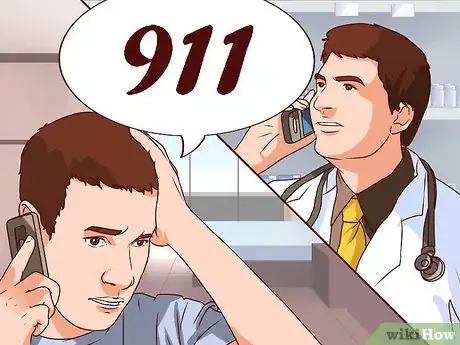
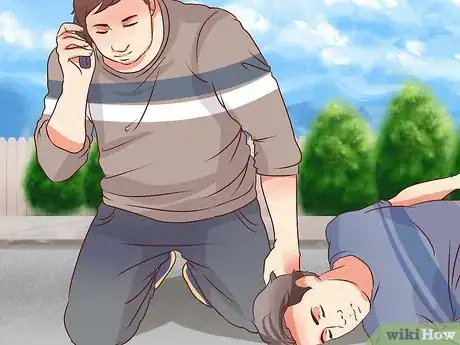
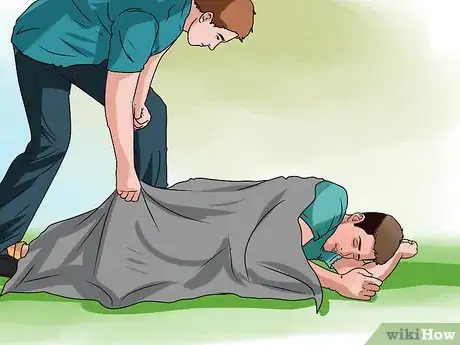

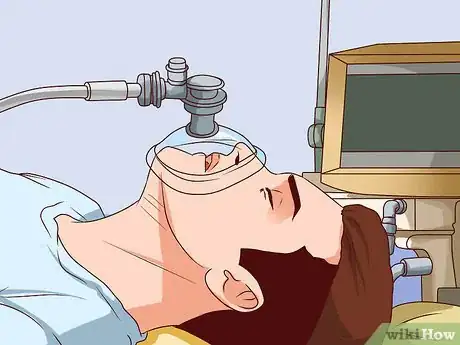

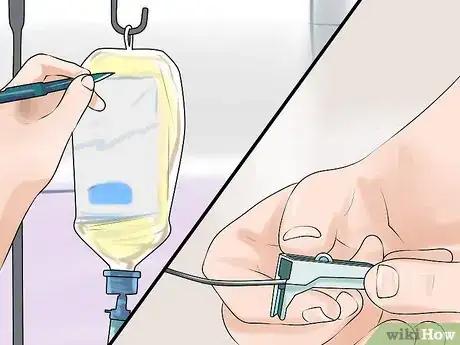
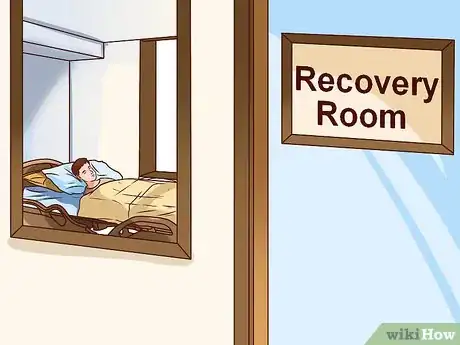
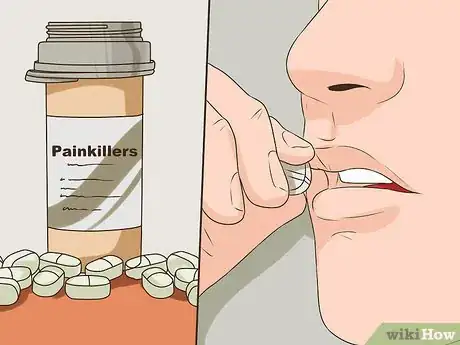
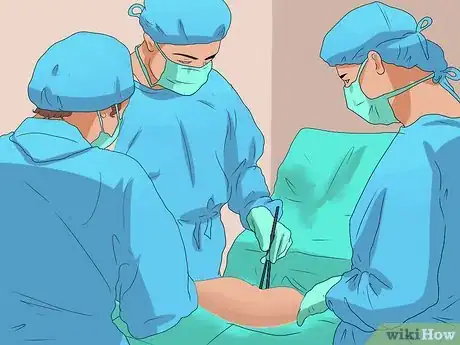
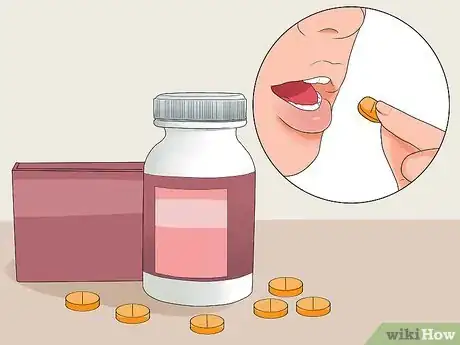
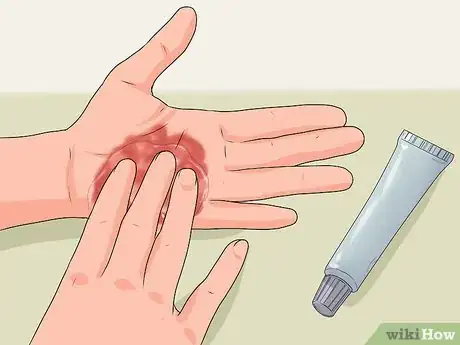
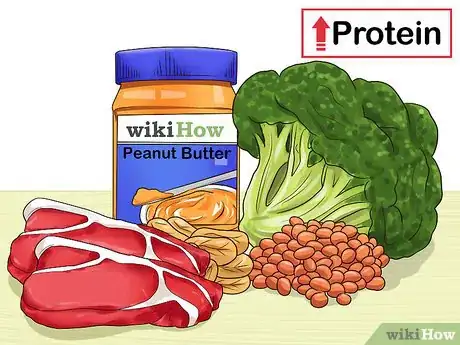

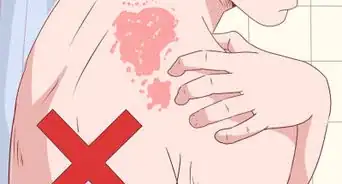






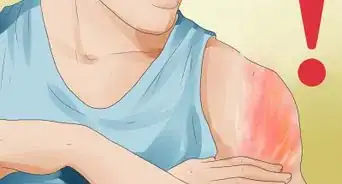
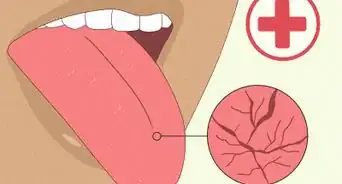


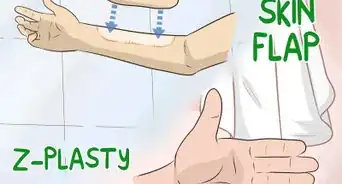
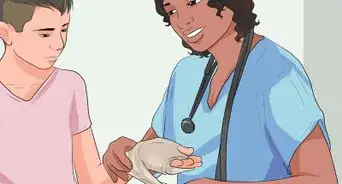
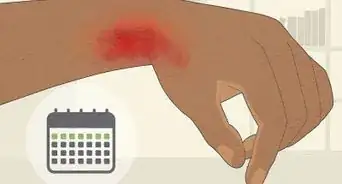









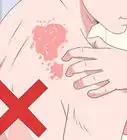
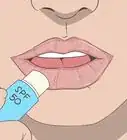
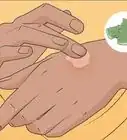
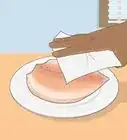



































Medical Disclaimer
The content of this article is not intended to be a substitute for professional medical advice, examination, diagnosis, or treatment. You should always contact your doctor or other qualified healthcare professional before starting, changing, or stopping any kind of health treatment.
Read More...